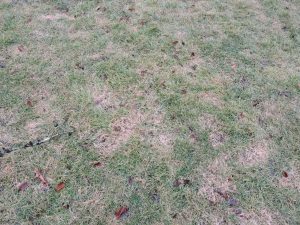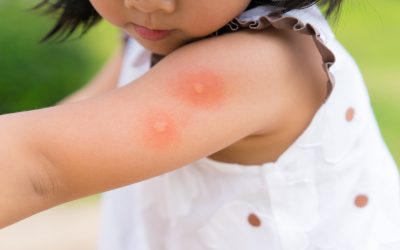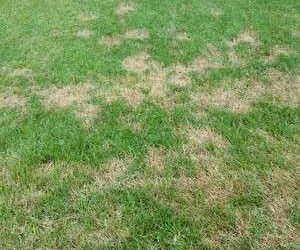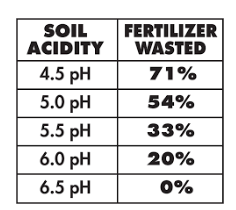As your lawn greens up over the spring, you hope to see ALL areas gaining color. But drying patches with pink or reddish strands running through them isn’t exactly the kind of color you were looking for! What you’re seeing is likely the beginning of a turf grass disease – Red Thread.
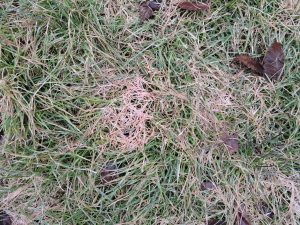
Red Thread can show up at any time during the growing season, but its most active times are May and June, when aggressive growth during the day uses up most of the nitrogen in the soil, and the nighttime temperatures hover around 70° F.
The reddish color of the grass blades is due to the brightly colored fungal pathogen Laetisaria fuciformis. Threadlike structures (mycelium) of the fungus form on the surface of infected leaves, and structures called sclerotia often extend in stringy masses out of the tip of the grass blade.
While the dry patches look like dead grass, Read Thread only kills the blade, not the root. So grass can recover once the cool, wet spring turns to the hotter, typically drier, summer season. That doesn’t mean you should ignore it. But then again, how could you – it looks awful!
It’s impossible to remove the pathogen that causes Red Thread, and we can’t control the weather, so the only way to address this disease is to strengthen your grass. How? Fertilizer. But don’t just go applying more of that big box store fertilizer mix willy nilly! Nitrogen is typically what your grass roots need, but before fertilizing your lawn each season you should test your soil.
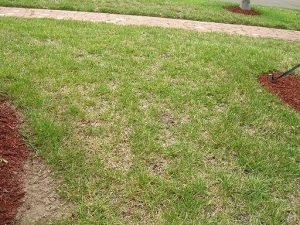
Too much nitrogen will burn your lawn, which is a much bigger problem than Red Thread!
While an eyesore, Red Thread is typically no more than that. Treating Red Thread with chemicals is generally not necessary and not recommended for residential lawns, but chemicals are a viable option for extreme cases (as determined by either the homeowner or lawn care professional). There are some specific fungicides that provide exceptional control (not elimination) of Red Thread. Virginia Tech field trials have shown Prostar, Heritage, and Armada to be exceptionally good choices.
Read more on Red Thread from Vtech.
Want the Pros at ProLawn to help out? Give us a call at 540-662-8316 to determine the best course of action for your particular situation.
